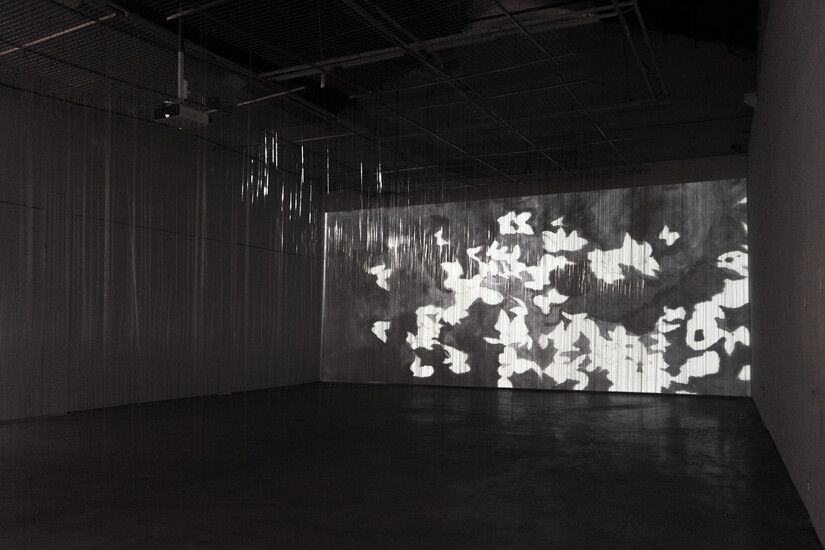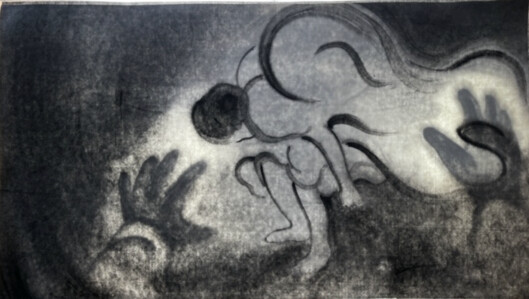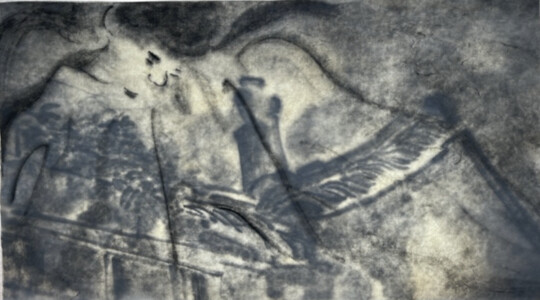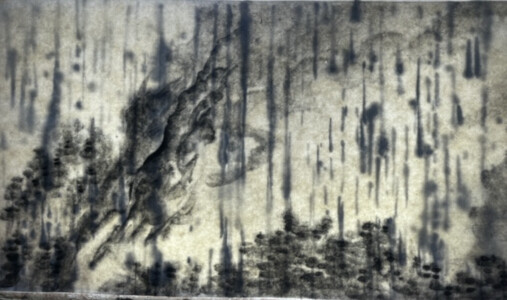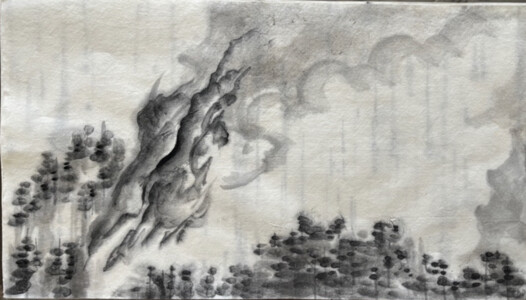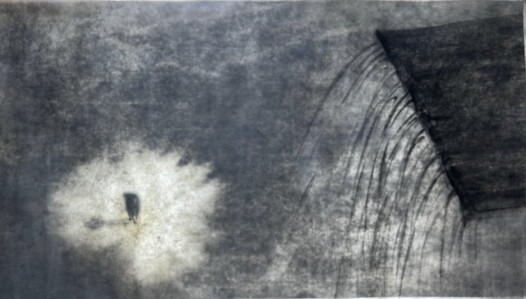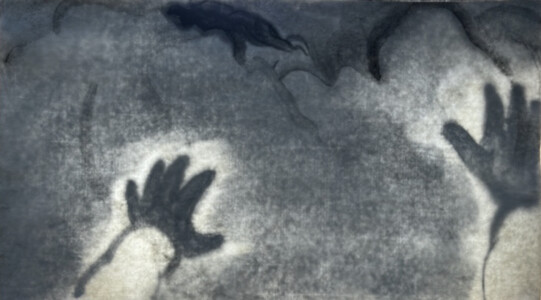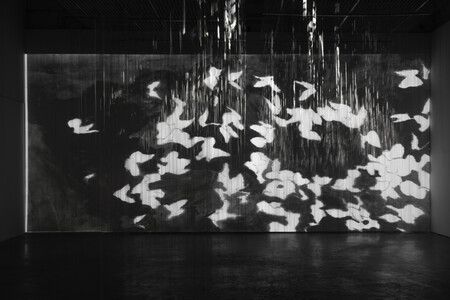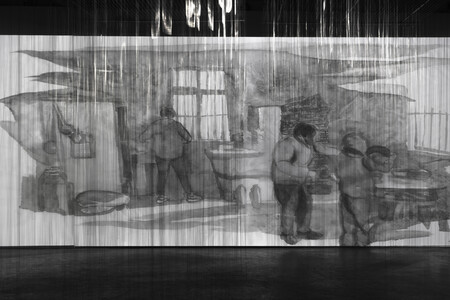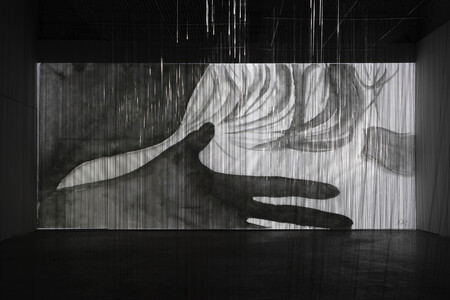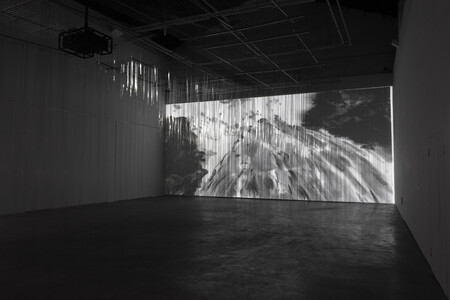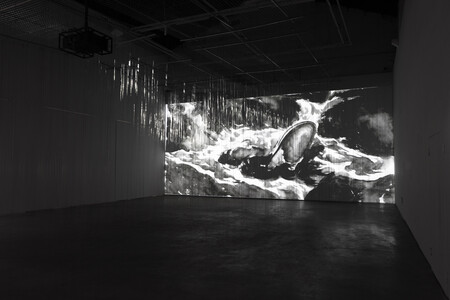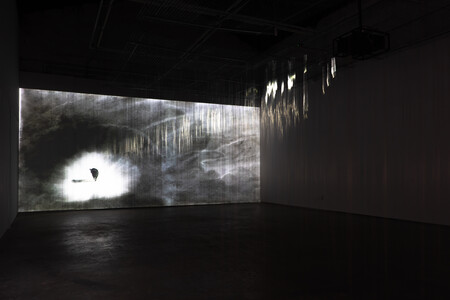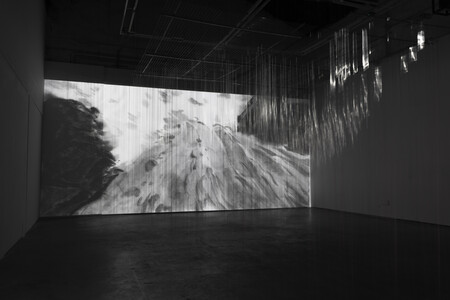Liu Yi inspiration from dreams and multiple realities in this series. Through ink animation, installations, and painting, the artist imagines dreams as an interweaving of our memories and parallel universes, firmly believing that "every dream is the experience of another self in a parallel universe."
The approximately five-minute ink animation When I Sleep, Dreams Come depicts a series of infinitely repeating dreams that trap the self in a cycle of sadness. The ink strokes, pulsating frame by frame, flicker across the screen, outlining elusive memories and perceptions. The images freeze in the damp state of un-dried rice paper, and each flowing scene subtly hints at tearful sorrow. These emotions are connected with the flickering rain lines in the spatial installation, collectively weaving a web of sadness and constructing a memory where real emotions blend with fantasy.
Detail pictures:

